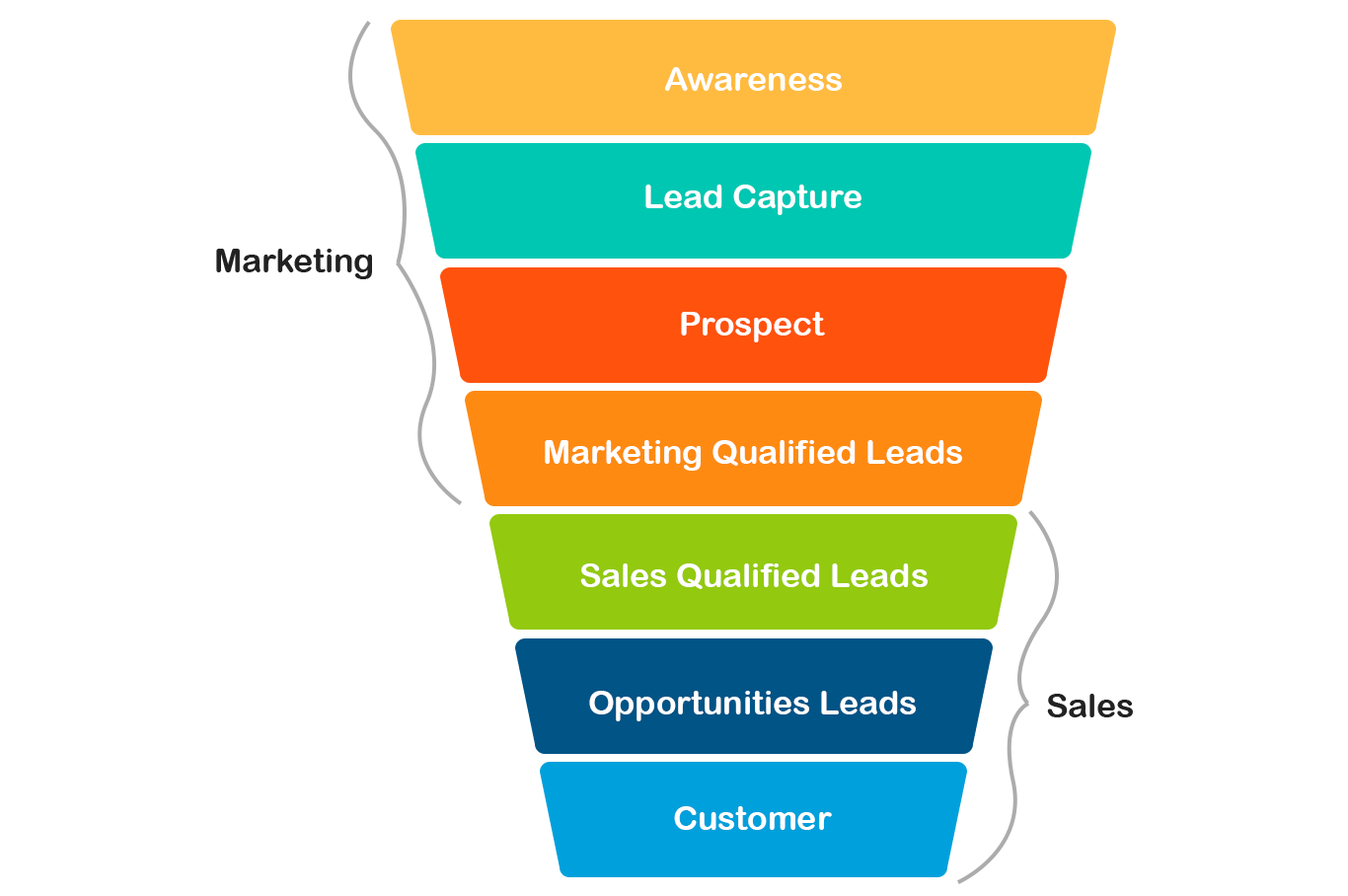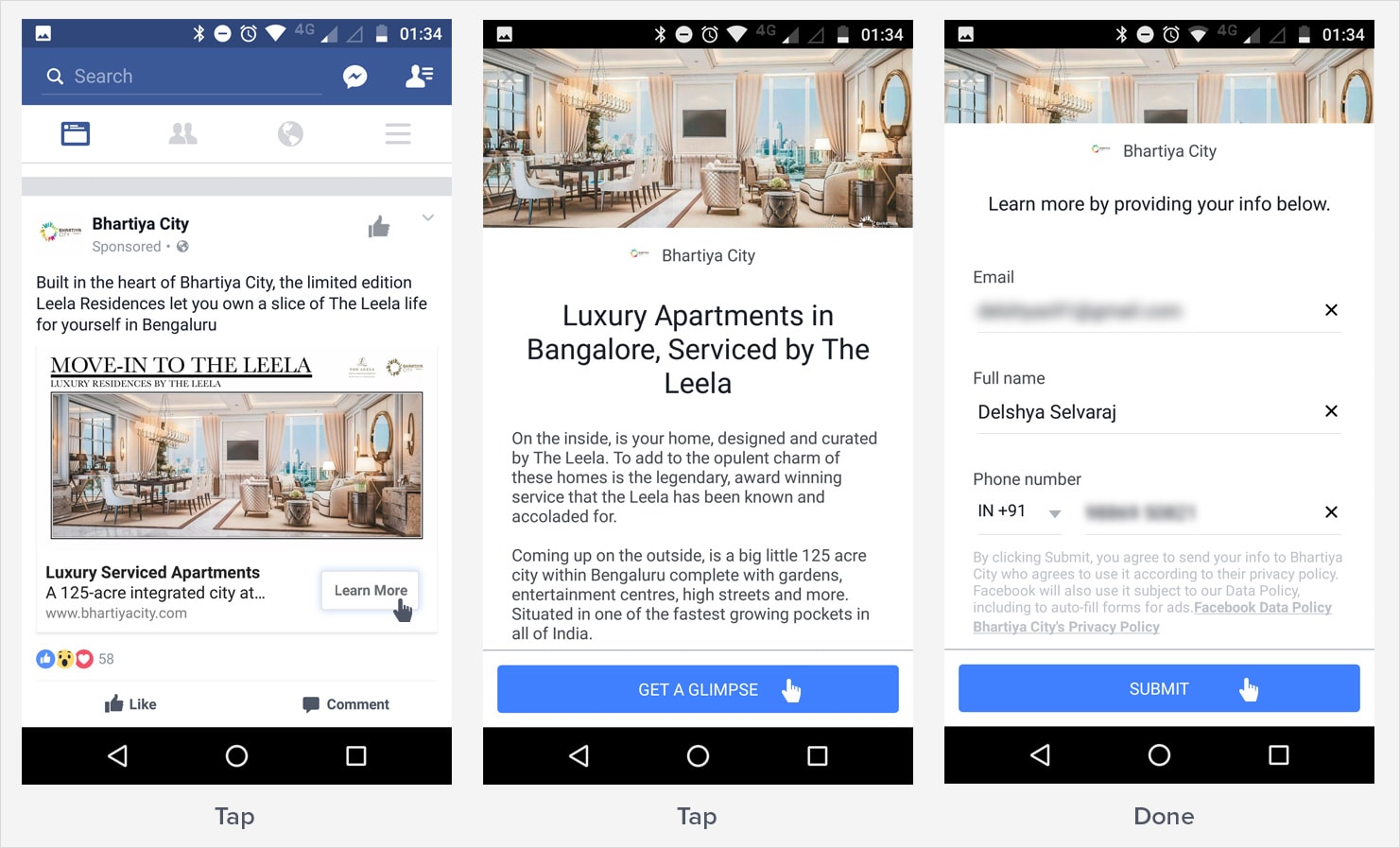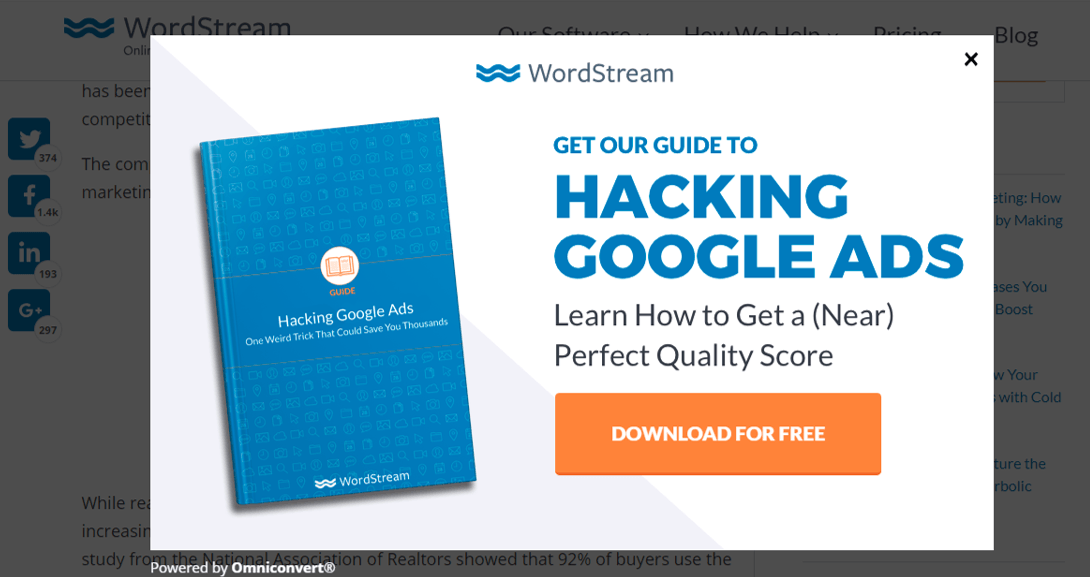For a business to run successfully, you need to have customers who are willing to pay for your product or service. But, how do you go about finding these customers?
You need to have leads who will then turn into prospects, who you can finally convert into customers. Most companies spend a lot of time perfecting their lead generation strategies so that they the leads keep coming in. But, more importantly, you need to perfect the lead funnel.
A proper lead generation funnel will help you to streamline your entire conversion process. You will be able to figure out how many leads make contact with your business and how many have actually become customers. This way, you will be able to find out why leads are converting and even why they are not. This is the sort of data that will help you tighten up your sales funnel and increase your conversion rates and in turn your revenue significantly.
What is a lead funnel?
A lead funnel, much like a sales funnel, is the pathway and the series of steps that a lead has to cross, right from being just another lead, to an interested prospect, to a hot opportunity to finally becoming a paying customer. This funnel is best comprehended as a visual representation which is split into the various stages that make up the funnel.
Constructing a lead funnel is absolutely essential for any business if ROI is something they are aiming for. But, before planning a building a lead funnel, you need to be aware of the different stages of the lead funnel.
Stages of the lead funnel
I’ll take you through each stage one at a time so that you have a thorough understanding of how they work. You can safely assume that your marketing and sales teams have a role to play in each stage of your funnel.
Here’s a quick overview of the 7 important stages of a lead funnel:
- Awareness
- Lead Capture
- Prospect
- Marketing Qualified Leads
- Sales Qualified Leads
- Opportunities
- Customers

Marketing part of the funnel
Awareness:
This is the first stage of any type of funnel. Because the only way that you can get anyone to buy from you is if they are aware of your business. This the first job for marketers. Increase awareness of the brand. The best bet for product discovery at this stage is through PPC campaigns and search engine marketing. If you have the right audience (and the budget), you can go for traditional methods of advertising as well, such as radio, television ads, newspapers, billboards, etc.
In this step, the general assumption is that your audience is not aware of you and what you have to offer. So, your method of reaching out to them should be about letting them know exactly what you are and how you can add value to their life. I was just browsing through my own Facebook looking for examples when I found this ad.

It tells you of their brand name, the need that they are looking to solve as well as the services that they offer. Now, I am aware of them and I have entered the first step of their funnel.
Lead capture:
The next part is about getting your audience to willingly give you their contact details by submitting a form or something equivalent to that. Why is this important? Because, when they voluntarily allow you to contact them, it indicates that they are interested in you. And, secondly, you would be able to further nurture them and push them into the next stage.
So, how do you convince them to give up their contact information? Thankfully, there are many ways in which you can capture leads. Let me give you a few examples.
PPC campaigns: Most online paid advertising platforms will allow you to link a landing page. You can create an informative and concise landing page with a relevant CTA. This will encourage your audience to submit the form. All platforms such as LinkedIn, AdWords, Facebook etc. give you this option. In fact, Facebook has designed a whole ad format called Lead Ads that deals primarily with lead capture.

Organic search: By writing relevant articles that rank for keywords to your business, you can attract traffic to your website. SEO is still very relevant and it is one of the cheapest methods in which you can ensure that you get unlimited traffic. But, you need to figure out the right keyword for your business and try to rank in the 1-5 position. It doesn’t end there though. After the visitor enters your page, you need to have a relevant CTA. This could be a related e-book they could download or a webinar they could attend. Look how WordStream uses an exit intent pop-up to capture leads.

Third party integrations: There are many aggregators in the market where people go to. You can find an aggregator for your business and register with them. Some common ones are JustDial, Sulekha.com, 99acres, OLX, etc. These marketplaces keep providing you leads for a price.
Offline marketing: Other than online methods, you can also conduct events or attend trade shows where people who belong to your industry are likely to attend. You can then use a good tool to capture your leads right there.
These are just some methods in which you get people to sign up with you. Now instead of vague metrics like views and traffic, you now have the email/phone number of actual people who are interested in what you have to offer. Now you have leads.
Prospect:
You have captured leads who are interested in your business. What is your next course of action? You have to ensure that these leads become prospects who are interested in buying from your business. The best way to do this is to constantly nurture them so that they are convinced that you would be able to solve their problem.
Email marketing automation works best here. You can send promotional and educational content that you write on your blog. Tell them why you are better than the competition and what unique value you will bring to the table. You can even send invites for webinars or educational videos to them. This keeps them engaged and keeps you on the top of their minds.
Marketing qualified lead:
Now, this is the final role that a marketer takes in a lead funnel. Through all their lead capture and nurturing efforts, they aim to convince the prospect to make a positive conversion action. This could be them scheduling a demo, or requesting a quote or even signing up for a free trial. Once this is done, marketing knows that the prospect is ready to make a sales pitch to and they qualify the lead and pass them on to the sales team.
Sales part of the lead funnel
Sales qualified lead:
Now, quality is relative when it comes to marketing and sales. In this age-old debate between the two, what marketing considers to be a high-quality lead, may not necessarily be true for the sales team. And the blame game starts.

Now sales start its own screening process where they start calling up the lead and asking them for requirements. The pre-sales team starts analyzing their actual requirement and how good of a fit they are for the business. The best way to do this is to have a lead scoring tool, which will let you assign scores based on lead activities. Once pre-sales deems them as good leads, they now get passed on to the sales team
[Also read: MQL vs SQL: Difference between them and how to convert more MQLs into SQLs.]
Opportunity:
Now the sales team comes into the picture, and they start identifying the opportunities where they can sell the product. So they start sending discount coupons and try and negotiate with the prospect. This is where a lot of back and forth happens and the salesperson keeps visiting the prospect trying to convince him to close the sale.
Customer:
In this final stage, the prospects finally choose to buy from you and is now a paying customer. This is traditionally the last stage of the funnel since the customer has converted. But, a smart business knows that they have to keep ensuring the customer is happy and provide constant support to ensure that they remain loyal. And, if they manage to delight the customer with the service they provide, then the customer might turn advocate for the business and in turn, bring in more customers himself.
These are the stages of a lead funnel and now you can build one for your own business. But, before your start arm yourself with a tool that will help you to build a strong lead funnel and help you track your leads as they travel through it.
You can check out LeadSquared, and give it a quick try!
FAQs
How to ensure my sales team uses a consistent approach to moving leads through the funnel?
Consistency is key. Here are some strategies:
1. Clear stage definitions: Clearly define the criteria for each stage of your lead funnel. This ensures everyone on the sales team has a shared understanding of when a lead can progress to the next stage.
2. Sales methodology training: Train your sales team on your chosen sales methodology and how it aligns with the stages in your funnel.
3. Regular pipeline reviews: Conduct regular pipeline reviews with your sales team to discuss lead progression, identify potential roadblocks, and ensure everyone is applying the same criteria when moving leads through the funnel.
What happens to leads that don’t convert at the bottom of the funnel?
Not all leads convert. Here’s how to handle them:
1. Identify the reason for not converting: Analyze why the lead didn’t convert. Was it due to budget constraints, competitor offerings, or a lack of qualification? Understanding the reasons helps refine your sales approach in the future.
2. Consider re-entering the funnel: Depending on the reason for not converting, you might re-introduce the lead to the top of the funnel with targeted nurturing campaigns if their needs or circumstances change in the future.
3. Move to a dedicated stage: Create a stage in your funnel for leads that are not moving forward, such as “Lost” or “Not Qualified.” This keeps your funnel clean and allows you to focus on active opportunities.
How to leverage marketing automation tools to manage the funnel more efficiently?
Automation streamlines tasks. Here are some ways to utilize automation:
1. Automated lead scoring: Set up automated lead scoring based on pre-defined criteria to prioritize qualified leads within your funnel.
2. Nurturing campaigns: Develop automated nurturing campaigns with targeted email sequences or social media outreach based on the lead’s stage in the funnel.
3. Automated alerts and reminders: Utilize automation to send alerts and reminders to sales reps when a lead reaches a specific stage in the funnel, prompting them to take appropriate action.







